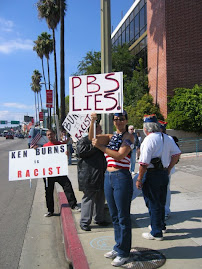With the National Football League playoffs decided and the approach of the final championship game on February 2nd, I am reminded of one Super Bowl XLVII commercial of last year. It was the fourth ranked, according to the NFL website, Chrysler Ram advertisement titled “To the Farmer in All of Us.”
As my son and I watched, deceased conservative radio broadcaster Paul Harvey recited his 1978 “So God Made a Farmer” paean as Ram trucks complemented avatars of Midwestern men, women, and children on presumed family farms. Imagery of cornfields, livestock, and the faces of weather-beaten cowboys valorized country life. Of the thirty-four slides a meager two contained people of color: an African American man sitting on the bed of a truck and a putative Latino son and mother before a produce stand.
The commercial raised my ire. Confused by my indignation, my boy asked why I was upset. I replied with the question, “Were the ‘farmers’ in the commercial what you see in the fields of the Oxnard Plain? After a reflective moment, my boy expressed his epiphany to the commercial’s fiction.
Like the majority of “farmers” in California, the people that labor in the fields, orchards, and vineyards of Ventura County don’t own the land; they earn a wage, are predominantly from Mexico and are, half the time, undocumented immigrants.
My parents, with immigrant origins from the Mexican states of Michoacán and Chihuahua, toiled in the “factories in the field” of fruits and vegetables as defined by Carey McWilliams, the paterfamilias of California History. And the dream that they held for their children was that we would not, someday, want to be “farmers.”
So the Chrysler Ram trailer is much more than an advertisement as it promotes an identity based on the Midwest region at the expense of people, living and dead, from different parts of the nation. (click to see Salvador Barajas's counter narrative "The Idea of Farmers")
Dating back to the mission era, California elites—whether they be missionaries, rancheros, or wheat barons—monopolized the land as lumpen classes of Native American, Asian, European, African, and Mexican origin people labored in the intense sun and bitter cold of agriculture.
Periodically, to improve their lot farm workers (composed of men, women, and children) collectively protested their station, sometimes successfully, for modest demands such as a living wage, water to drink, adequate shelter, and safe work conditions.
This occurred on the Oxnard Plain in 1903 when a coalition of Japanese and Mexican sugar beet workers and labor contractors formed the Japanese Mexican Labor Association. They resisted the attempt of a coterie of growers and financiers to slash the extant wage rate by fifty percent. The sugar beet barons also created the Western Agricultural Contracting Company to eliminate independent labor agents.
Despite the wealth and power of agribusiness, the JMLA enjoyed a victory against a class of employers that often pitted one ethnic group against another to undermine labor solidarity.
The omission of such events from our history preserves the Jeffersonian myth of the yeoman farmer as self-sufficient and individualistic.
Contrary to the yeoman legend, growers today belong to associations and bureaus to advance their interests as farming is big business. In fact, it has been so dating back to the early 19th century. For example, where I live the total value of agricultural production today, according to the Farm Bureau of Ventura County, approaches $2 billion, with the crops of strawberries and raspberries topping the list.
The people that own these prolific properties are not the ones involved in the cultivation of the land for wages near or below the poverty line of subsistence.
According to the United States Department of Agriculture the average annual income of crop farmworkers is $20,000. Sixty-eight percent of these workers come from Mexico; twenty-nine percent consist of people born in the US and Puerto Rico; the remaining three percent are from Central America and other countries.
But the Chrysler Super Bowl ad of last year veiled these realities from an audience seeking an escape from the anxiety filled actualities of modern life.
Indeed, the late US historian Richard Hofstadter argued in a 1956 American Heritage essay titled, “The Myth of the Happy Yeoman” that the more we find ourselves in an urbanized society the more powerful the fantasy of a fading agrarian ideal. Hofstadter also noted that since the early nineteenth century the market revolution of commerce and land speculation stoked the monetary passions of growers, not a spiritual devotion to the soil.
More recently, this nostalgic yearning has intensified as a demographic shift has emerged with an ever increasing number of people with origins like mine, from Mexico, and other parts of the world becoming the new majority. Chrysler might want to take note of this for its next Super Bowl commercial as non-Midwestern people, like “All of Us,” buy trucks too.
Con Safos
fpb
Versions of this essay were published by The Bakersfield Californian,History News Network, the Ventura County Star, Amigos805, and LatinoLa.
Subscribe to:
Post Comments (Atom)



No comments:
Post a Comment